Graphics rendering is an integral part of the gaming experience, shaping how players interact with virtual worlds and immersing them in captivating adventures. Within the realm of gaming graphics, two primary rendering techniques stand out: Ray Tracing and Rasterized Rendering. These methods represent distinct approaches to generating visuals in games, each with its own set of advantages and challenges.
As gaming continues to evolve and the demand for immersive experiences grows, the choice between Ray Tracing and Rasterized Rendering becomes increasingly significant. Let’s explore these rendering techniques in depth, examining their strengths, weaknesses, and impact on the gaming industry.
Rasterized Rendering
Understanding the nuances of Ray Tracing and Rasterized Rendering is crucial for game developers and enthusiasts alike. It not only sheds light on the underlying technologies driving modern games but also influences decisions regarding game design, performance optimization, and hardware requirements.
What Is Rasterized Rendering?
Rasterized Rendering has long been the cornerstone of real-time graphics in gaming, providing a fast and efficient way to render complex scenes on the fly. At its core, Rasterization involves converting 3D objects and environments into 2D images by projecting them onto a screen pixel by pixel. This process occurs within the rasterization pipeline, which comprises several stages such as vertex processing, primitive assembly, and pixel shading.
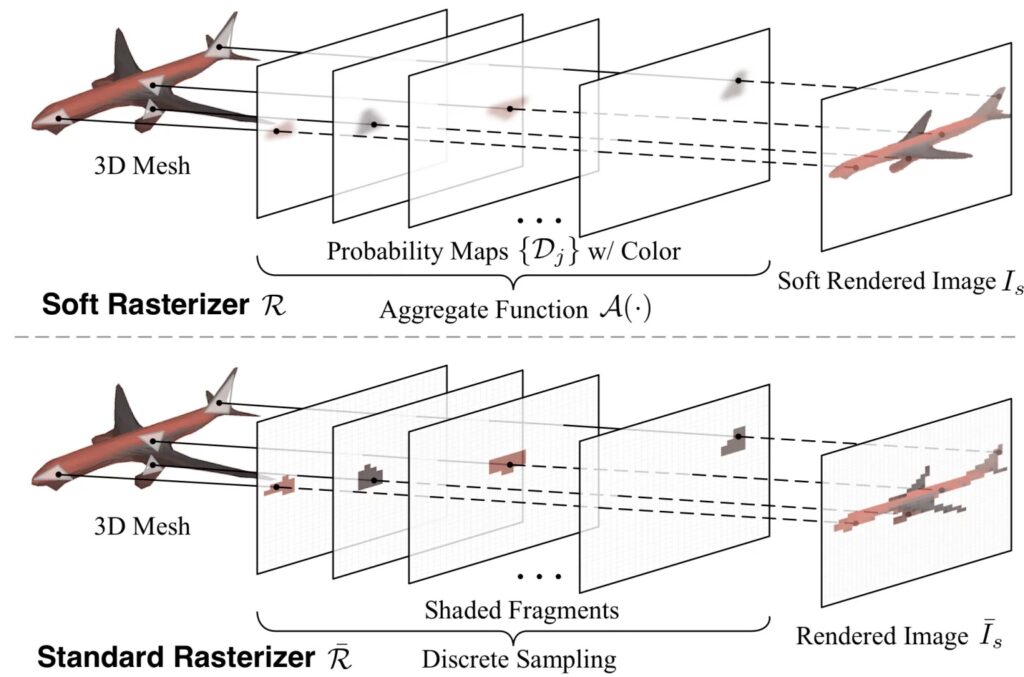
Through these stages, rasterization transforms geometric data into a rasterized image, ready for display to the player. In gaming, rasterization is favored for its ability to handle dynamic environments, large-scale scenes, and fast-paced action, all while maintaining smooth frame rates and responsive gameplay.
Limitations
Despite its widespread use, Rasterized Rendering does have limitations, particularly in achieving photorealistic visuals and accurate lighting effects. One of the primary limitations of rasterization is its inability to accurately simulate certain lighting effects, such as reflections and global illumination. Since Rasterization relies on approximations and simplifications, it may struggle to accurately simulate complex lighting scenarios or produce realistic reflections and shadows.
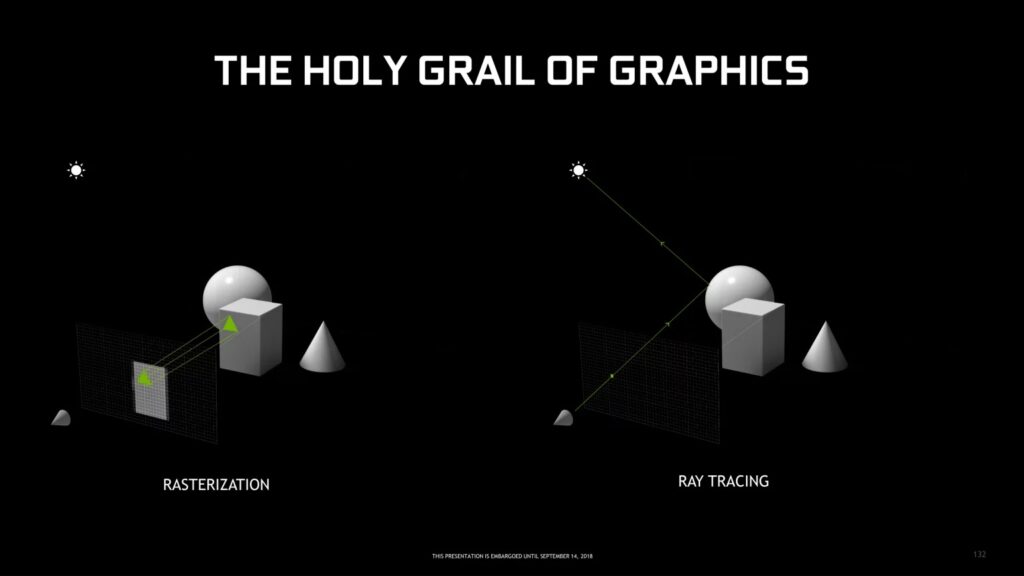
However, advancements in graphics technology and rendering algorithms have mitigated some of these shortcomings, allowing rasterization to deliver impressive visuals in modern games. By leveraging techniques such as pre-baked lighting, screen-space reflections, and advanced shader effects, developers can enhance the visual fidelity of rasterization while maintaining real-time performance. In essence, rasterized rendering remains a cornerstone of gaming graphics, offering a versatile and efficient solution for rendering immersive virtual worlds in real-time.
Pros
- Easy to run
- Acceptable visual quality
- Widespread accommodation
- Ideal for competitive gaming
Cons
- Looks less photorealistic
- Cannot form real-time reflections
Real-Time Ray Tracing
Ray Tracing represents a paradigm shift in gaming graphics, offering a level of realism and visual fidelity previously unseen in real-time rendering. Unlike rasterization, which approximates lighting and shadows through rasterized images, Ray Tracing simulates the behavior of light rays as they interact with virtual objects in the scene. This technique enables lifelike visuals with accurate reflections, soft shadows, and realistic global illumination.
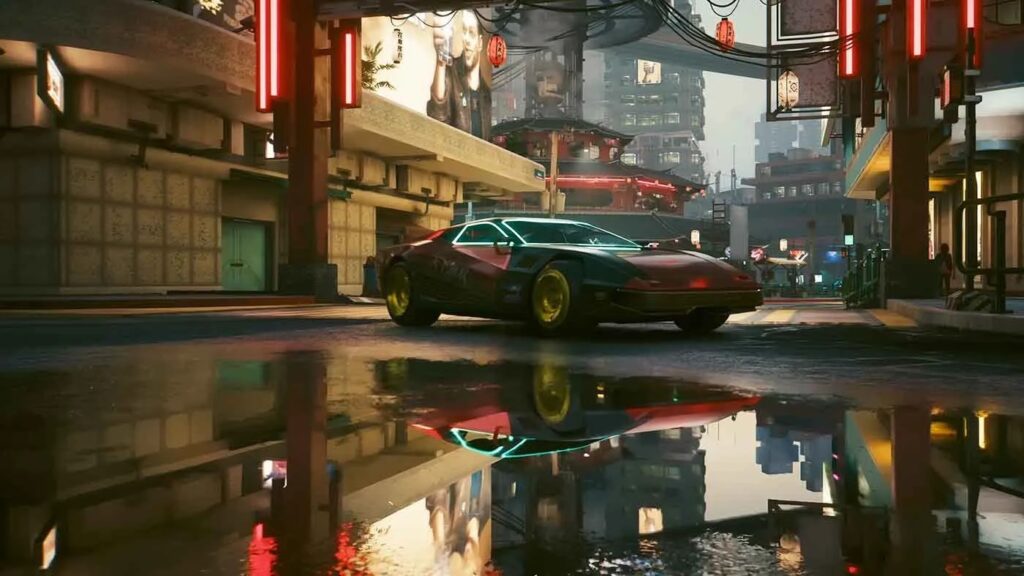
How Ray Tracing Works
- At its core, Ray Tracing works by tracing rays of light as they interact with objects in the scene.
- The process begins with the emission of rays from the virtual camera, which travel through the scene until they intersect with objects.
- Upon intersection, rays gather information about the objects they hit, such as their surface properties and material properties.
- This information is then used to calculate how the rays interact with the objects, including effects such as reflection, refraction, and shading.
- By simulating the physical behavior of light, Ray Tracing is able to produce lifelike images with accurate lighting, shadows, reflections, and other visual effects.
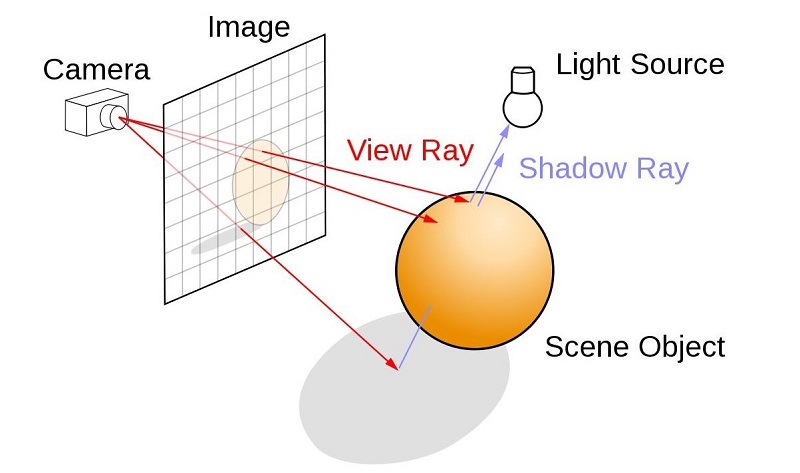
Ray Tracing In Gaming
In gaming, Ray Tracing has the potential to elevate immersion by creating environments that closely resemble the physical world. However, the computational demands of Ray Tracing pose a significant challenge for real-time applications, requiring powerful hardware and sophisticated algorithms to achieve acceptable performance.
Despite these challenges, recent advancements in hardware acceleration and optimization techniques have made real-time Ray Tracing feasible in gaming environments. With the introduction of dedicated Ray Tracing hardware in next-generation consoles and high-end GPUs, game developers now have the tools to implement Ray Tracing in their titles. This has led to a growing number of games embracing Ray Tracing to deliver stunning visual experiences, showcasing realistic reflections, dynamic lighting, and immersive environments.
Pros
- Superior photorealism
- Exceptional lighting effects
- Great for global illumination
- Superb shadow detail
Cons
- Demanding to run
- Limited implementation
Comparison in Gaming
Rasterization has been a cornerstone of gaming since the early days of 3D games, while Ray Tracing has recently been gaining steam thanks to NVIDIA’s RTX series of graphics cards. By comparison, rasterized rendering excels in real-time performance and efficiency, making it ideal for fast-paced action games and multiplayer experiences where smooth frame rates are crucial. However, rasterization may struggle to achieve the level of realism offered by Ray Tracing (and its superior form, Path Tracing) especially in scenes with complex lighting and reflections.
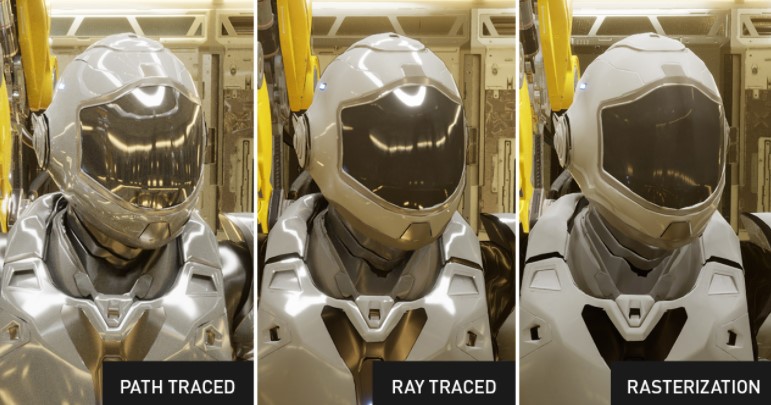
Ray Tracing, on the other hand, offers unparalleled visual fidelity and realism but comes with higher computational costs and implementation complexity. The choice between the two techniques ultimately depends on the specific requirements of the game and the desired balance between performance and visual quality.
In recent years, we’ve witnessed a convergence of Ray Tracing and Rasterized Rendering, leading to hybrid approaches that combine the strengths of both techniques. These hybrid rendering solutions aim to leverage the efficiency of rasterization for most of the scene while selectively applying Ray Tracing for critical visual effects like reflections and shadows. As gaming hardware continues to evolve and software optimization techniques improve, we can expect the line between Ray Tracing and Rasterized Rendering to blur further, resulting in even more immersive and visually stunning gaming experiences.
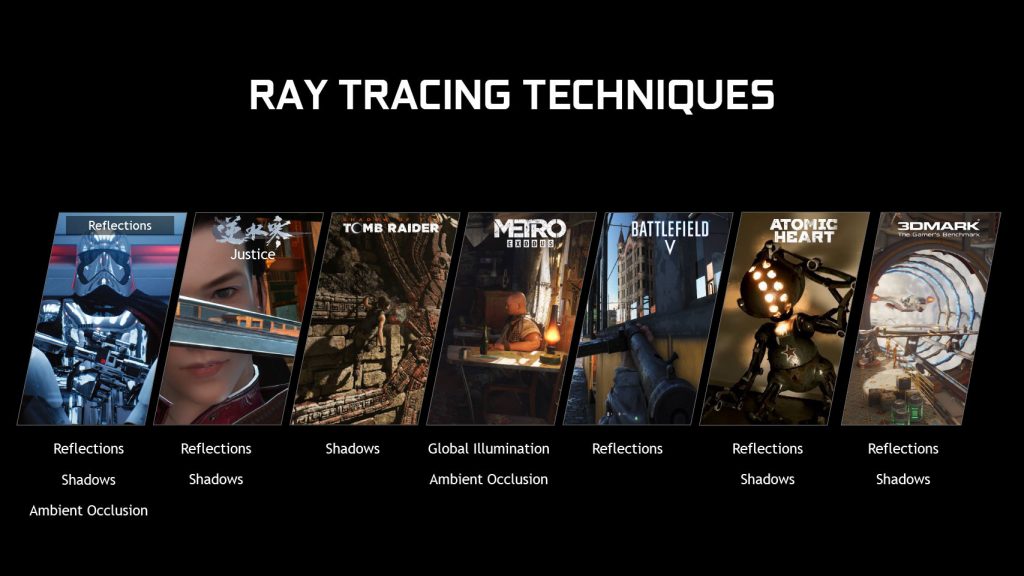
Deep Learning Super Sampling
DLSS, or Deep Learning Super Sampling, is a pioneering technology developed by NVIDIA to revolutionize gaming graphics. By employing sophisticated machine learning algorithms using dedicated Tensor Cores, DLSS dynamically upscales lower-resolution images to higher resolutions in real time, presenting crisper visuals with finer details while simultaneously improving gaming performance. Through neural network training on high-resolution imagery, DLSS learns intricate patterns and textures to accurately predict missing information in lower-resolution frames, effectively bridging the gap between graphical fidelity and computational efficiency.
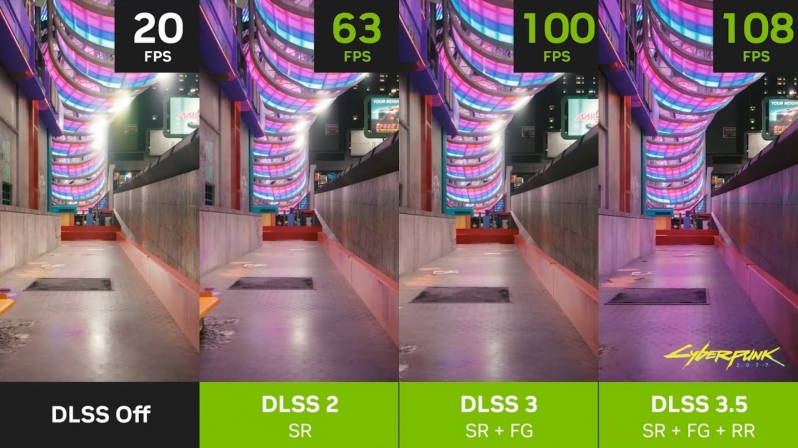
DLSS is often bundled alongside Ray Tracing in supported games as a method to compensate for the performance loss incurred by real-time Ray Tracing. This innovation not only enhances the overall gaming experience by delivering smoother gameplay and higher frame rates but also ensures seamless integration within existing game engines and graphics APIs. We have already covered DLSS in detail, and have also discussed its AMD competitor, FidelityFX Super Resolution.
The Future of Ray Tracing
- Enhanced Realism: Future advancements in Ray Tracing technology will focus on further enhancing realism in gaming graphics, with improvements in areas such as lighting, shadows, reflections, and global illumination.
- Hardware Advancements: Continued advancements in GPU technology will lead to more powerful and efficient hardware specifically optimized for Ray Tracing, allowing for even more complex and detailed scenes to be rendered in real time.
- More Games and Platforms: With continued advancements in hardware and optimization techniques, real-time Ray Tracing will become increasingly prevalent across more games and gaming platforms, enabling developers to create immersive environments with lifelike visuals.
- AI-driven Techniques: DLSS (Deep Learning Super Sampling) and other AI-driven techniques will play a significant role in the future of Ray Tracing, enhancing visual quality while maintaining high frame rates and optimizing performance.
- Cloud Gaming Integration: The rise of cloud gaming services will enable even more players to experience the benefits of Ray Tracing without the need for high-end gaming hardware, as the rendering workload can be offloaded to remote servers with dedicated Ray Tracing capabilities.
- Industry Adoption: Ray Tracing will continue to be adopted across various industries beyond gaming, including film, architecture, automotive design, and virtual reality, further driving innovation and pushing the boundaries of visual realism.
Bottom Line
The debate between Ray Tracing and Rasterization in gaming is not about choosing one over the other but understanding their respective strengths and applications. Rasterized Rendering excels in real-time performance and efficiency, making it indispensable for fast-paced gaming experiences. On the other hand, Ray Tracing offers unmatched realism and visual fidelity, transforming gaming into cinematic experiences. As technology continues to evolve, Ray Tracing is expected to play an increasingly prominent role in gaming graphics, driving innovation and pushing the boundaries of what’s possible in virtual worlds.
Thank you! Please share your positive feedback. 🔋
How could we improve this post? Please Help us. 😔
[Reviews Specialist]
Usman Saleem brings 8+ years of comprehensive PC hardware expertise to the table. His journey in the tech world has involved in-depth tech analysis and insightful PC hardware reviews, perfecting over 6+ years of dedicated work. Usman’s commitment to staying authentic and relevant in the field is underscored by many professional certifications, including a recent one in Google IT Support Specialization.
- 8+ years of specialized PC hardware coverage
- 6+ years of in-depth PC hardware analysis and reviews
- Lead PC hardware expert across multiple tech journalism platforms
- Certified in Google IT Support Specialization


 Threads
Threads


